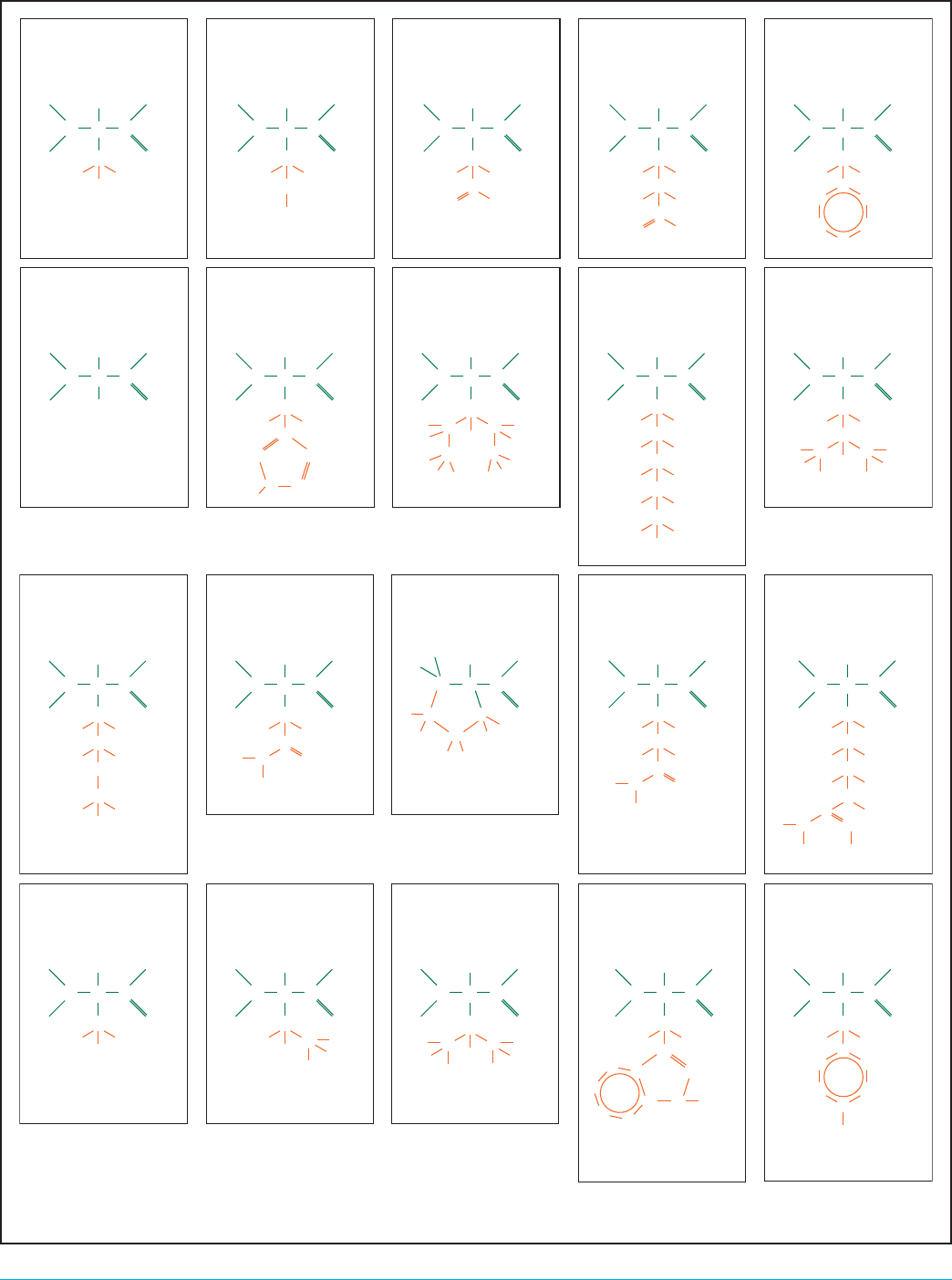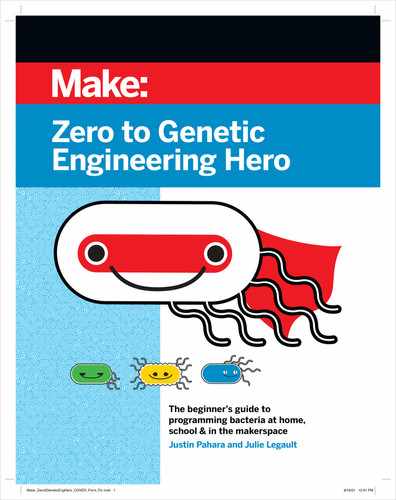
Zero to Genetic Engineering Hero - Chapter 3 - Growing E. coli Cells 81
What other microorganisms are used in genetic engineering? Pro-tip
Even though we will be using E. coli as our microfactories throughout this book, other organisms are also
used as microfactories.
Living organisms that are genetically engineered to act as factories are mostly limited to single-celled
microorganisms because they are easier to engineer, grow, and control genetically. Single-celled organisms
grow and reproduce as singular entities, in contrast with multi-celled organisms like humans, where many
cells grow together to form tissues, organs, and entire complex organisms.
Common single-celled organisms (or microfactories as we are calling them) used for biomanufacturing
are listed in Table 3-2.
Considering the different classes of organisms, single-celled bacteria are generally the simplest to engineer
as they have the least complex architecture and internal machinery. As you’ll see in Table 3-2, bacteria are
smaller and have much less DNA than yeast or mammal cells. This is another reason for starting out with
E. coli, they are simply easier to program.
Table 3-2. Microorganisms Used for Genetic Engineering and Biomanufacturing
Class Physical Size Genome Size (MB*) Examples
Bacteria 1-3 um in diameter
0.6-5 MB in a single chromosome
(~4,000 genes)
Escherichia coli (gram -), Bacillus subtilis
(gram +), Synechocystis sp.(cyanobacteria)
Yeast 3-10 um in diameter 12 MB (~6,000 genes) Pichia pastoris, Saccharomyces cerevisiae
Algae 10 um in diameter
~150 MB in 17 chromosomes
(~14,000 genes)
Chlamydomonas reinhardtii
Mammals 15 um in diameter
~5,200 MB in 22 chromosomes
(~24,000 genes)
Chinese Hamster Ovary cells (CHO)
*MB: megabases = 1,000,000 base pairs (or nucleotides in length)
Mammals vs. Microorganisms:
The last row in Table 3-2 includes mammalian cells. But aren’t mammals complex organisms? Aren’t they
made of many cells that form tissues?
The answer is yes! However, in the case of genetic engineering and biomanufacturing, many ‘cancerous’
cells (cells that can grow and duplicate without special signals from other cells) are used. Normally, cells
can only grow and divide with the right signals from other cells. There are many check and balance systems
in place to ensure that mammalian cells are unable to grow by themselves and can only complete the tasks
they are specialized to do. But some cells can become cancerous.
In many cases, this is because their DNA was not correctly copied, allowing them to grow at their own pace,
uncontrollable by other cells and by their environment. Genetic engineers are now turning some of these
harmful and deadly cancerous cells into factories, often to create medicines that are saving patients’ lives
- even patients with cancer. TAKE THAT CANCER! Be aware that most human cell lines used for genetic
engineering are considered RG-2 organisms and require special lab spaces and authorizations.
Book _genetic engineering hero-AUG2021.indb 81Book _genetic engineering hero-AUG2021.indb 81 8/18/21 12:03 PM8/18/21 12:03 PM

Zero to Genetic Engineering Hero - Chapter 3 - Growing E. coli Cells 82
N
H
H
HH
C
C
OH
C
H O-
A
Alanine
Ala
N
H
S
HH
C
C
OH
C
H O-
H
C
Cysteine
Cys
N
H
C
HH
C
C
OH
C
H O-
O-O
D
Aspartate
Asp
N
H
C
HH
C
C
OH
C
H O-
HH
C
O-O
E
Glutamate
Glu
N
H
HH
C
C
OH
C
H O-
F
Phenylalanine
Phe
CC
C
C C
C
N
H
HH
C
C
OH
C
H O-
HH
C
HH
C
HH
C
HH
N+
H
K
Lysine
Lys
N
H
H
C
OH
C
H O-
G
Glycine
Gly
N
H
HH
C
C
OH
C
H
H O-
H
Histidine
His
N
C
C
N
C
N+
H
CC
C
O
C
H
O-
P
Proline
Pro
C
H
H
H
H
H
H
H
N
H
C
OH
C
H
H
H O-
CC
C
H
H
C
H
H
H
H
I
Isoleucine
Iso
H
H
H
C
N
H
HH
C
C
OH
C
H
H
H
H O-
CC
C
H
H
H
H
L
Leucine
Leu
N
H
HH
C
C
OH
C
H O-
HH
C
S
HH
C
H
M
Methionine
Met
N
H
HH
C
C
OH
C
H O-
O
NH
H
C
N
Asparagine
Asn
N
H
HH
C
C
OH
C
H O-
OH
S
Serine
Ser
N
H
HH
C
C
OH
C
H O-
HH
C
ON
H
H
C
Q
Glutamine
Gln
N
H
HH
C
C
OH
C
H O-
HH
C
HH
C
H
N
N+N
H
H
C
H
R
Arginine
Arg
N
H
C
OH
C
H
H
H
H O-
CC
C
H
H
H
H
V
Valine
Val
N
H
CHO
C
C
OH
C
H O-
H
H
H
H
T
Threonine
Thr
N
H
HH
C
C
OH
C
H
H O-
W
Tryptophan
Trp
C
C
C
C
N
C
C
C
C
N
H
HH
C
C
OH
C
H O-
Y
Tyrosine
Tyr
CC
C
OH
C C
C
Figure 3-30. E. coli makes 20 amino acids that are then used as building blocks to create proteins chains. The orange region is called
a “side group”, and the green region is the “amine-carboxyl backbone”.
Book _genetic engineering hero-AUG2021.indb 82Book _genetic engineering hero-AUG2021.indb 82 8/18/21 12:03 PM8/18/21 12:03 PM

Zero to Genetic Engineering Hero - Chapter 3 - Growing E. coli Cells 83
Summary and What’s Next?
In this chapter, you grew real lab-strain K12 Escherichia
coli (E. coli) cells on LB agar petri dishes. Congratula-
tions! Knowing how to grow the organism you plan to
engineer is the rst step towards learning the genetic
engineering process. This fundamental skill is used
in virtually all your genetic engineering experiments.
You will quickly become an expert at making LB agar
plates and streaking microorganisms.
In the Fundamentals section, we dug deeper into where
K12 E. coli come from and how they differ from the E.
coli bacteria that live in your large intestine and the
dangerous ones that can make you sick. We compared
the K12 E. coli to factories and looked into the phys-
ical make-up of their cells: the capsule layer, outer
membrane, intermembrane space, peptidoglycan,
inner membrane, and the cytoplasm. Knowing the
architecture of the cells is very important in your jour-
ney to becoming a Genetic Engineering Hero.
In addition to the physical structure of E. coli cells,
you learned about the macromolecules that form
them. You used the knowledge of nucleic acids gained
in Chapter 1 to become familiar with sugars (a.k.a
saccharides or carbohydrates), lipids, and proteins.
Collectively, these macromolecules are made up of
CHOPNS, a group of atoms that scientists call organic
elements.
In the upcoming chapters, the four different types
of macromolecules (nucleic acids, lipids, sugars,
proteins) will repeatedly come up. Your understand-
ing of them will continue to grow and become more
sophisticated. In Chapter 4, you will do your first
genetic engineering experiment where you will take
the skills you learned in this chapter to the next level
by genetically engineering K12 E. coli cells with DNA
plasmids, making them your own microfactories!
In the Fundamentals of Chapter 4, you will step one
layer deeper into E. coli cells. You will go beyond simply
what they are made of and more into how they func-
tion. Specifically, you will discover how cells read
DNA blueprints to create other products through a
process called transcription. Transcription requires
some knowledge of all the macromolecules, so hang
onto what you learned in the Fundamentals from this
chapter!
-MReB
+MReB
Figure 3-31. What causes bacteria to be spherical or rod shaped?
Why are E. coli rod-shaped? Going Deeper 3-8
Proteins can determine cell structure. Why are E. coli bacteria rod-shaped and not spherical like other bacte-
ria? It was thought that peptidoglycan and the outer cell membrane are responsible for the bacterium’s
rod shape. However, it has now been shown that several proteins, including one called “MreB”, regulate
the shape of E. coli. Genetically engineered E. coli that lack MreB becomes spherical in shape! A follow-up
question is, why does E. coli benet from being rod-shaped? Why has it evolved to have this characteristic?
The answer is still unknown!
Book _genetic engineering hero-AUG2021.indb 83Book _genetic engineering hero-AUG2021.indb 83 8/18/21 12:03 PM8/18/21 12:03 PM

Zero to Genetic Engineering Hero - Chapter 3 - Growing E. coli Cells 84
Review Questions
Hands-on Exercise
1. What is LB agar used for? What are the two important ingredients in LB agar?
2. How do you know you have created your LB agar plates correctly?
3. How can you conrm that you actually dipped your loop in cells before you start streaking?
4. What are the steps for inactivation?
5. What is a plate?
Fundamentals
1. Where do K12 E. coli come from?
Book _genetic engineering hero-AUG2021.indb 84Book _genetic engineering hero-AUG2021.indb 84 8/18/21 12:03 PM8/18/21 12:03 PM

Zero to Genetic Engineering Hero - Chapter 3 - Growing E. coli Cells 85
2. List three key deciencies that K12 E. coli have compared to natural E. coli.
3. What are the ve key locations in an E. coli cell and how do they relate to locations in a factory?
4. Describe what CHOPNS is.
5. What three macromolecules were described in this chapter and what atoms are each made of?
Book _genetic engineering hero-AUG2021.indb 85Book _genetic engineering hero-AUG2021.indb 85 8/18/21 12:03 PM8/18/21 12:03 PM
..................Content has been hidden....................
You can't read the all page of ebook, please click here login for view all page.
